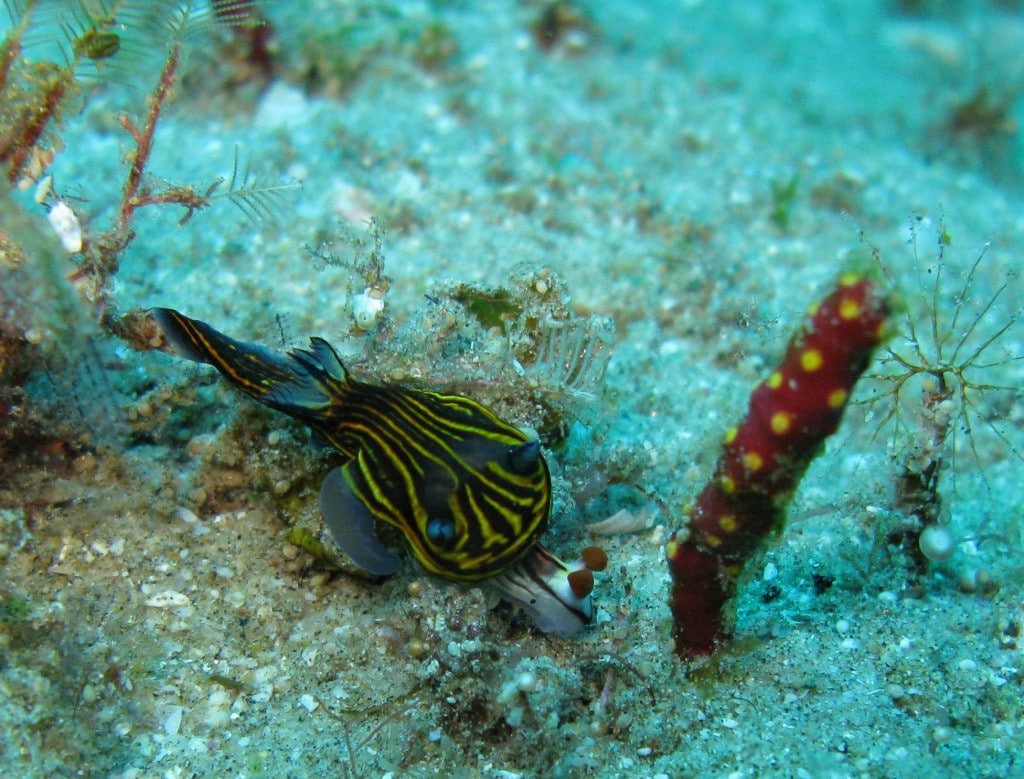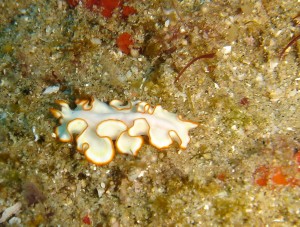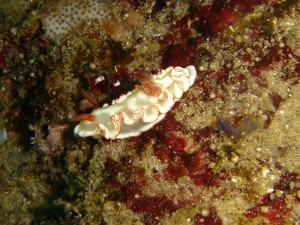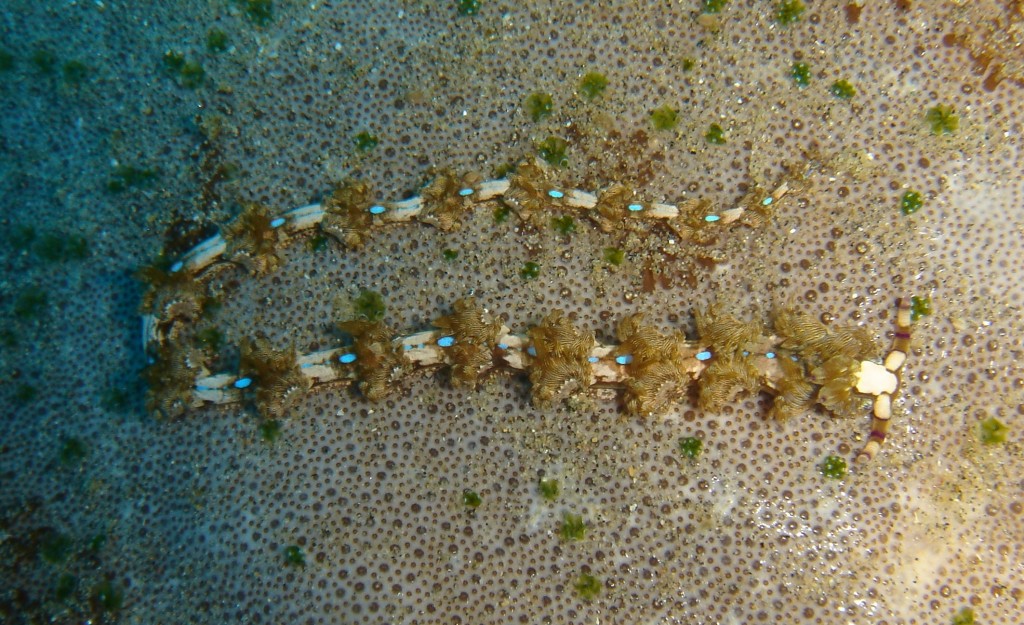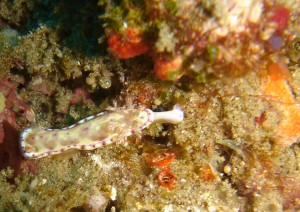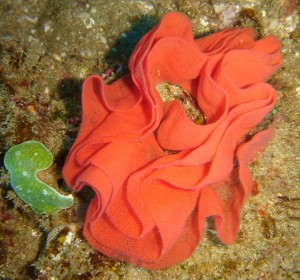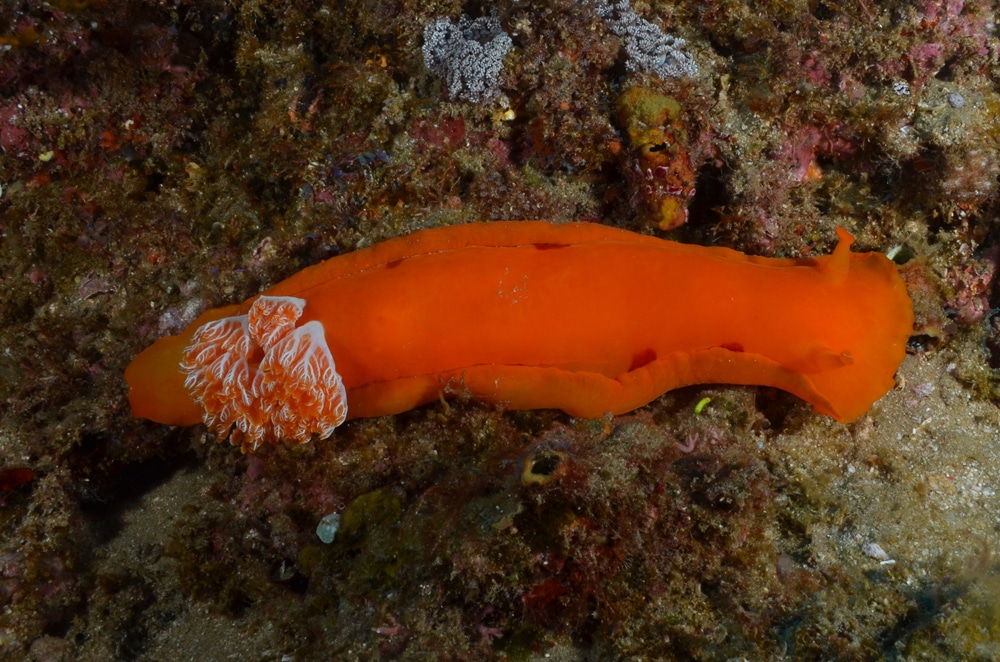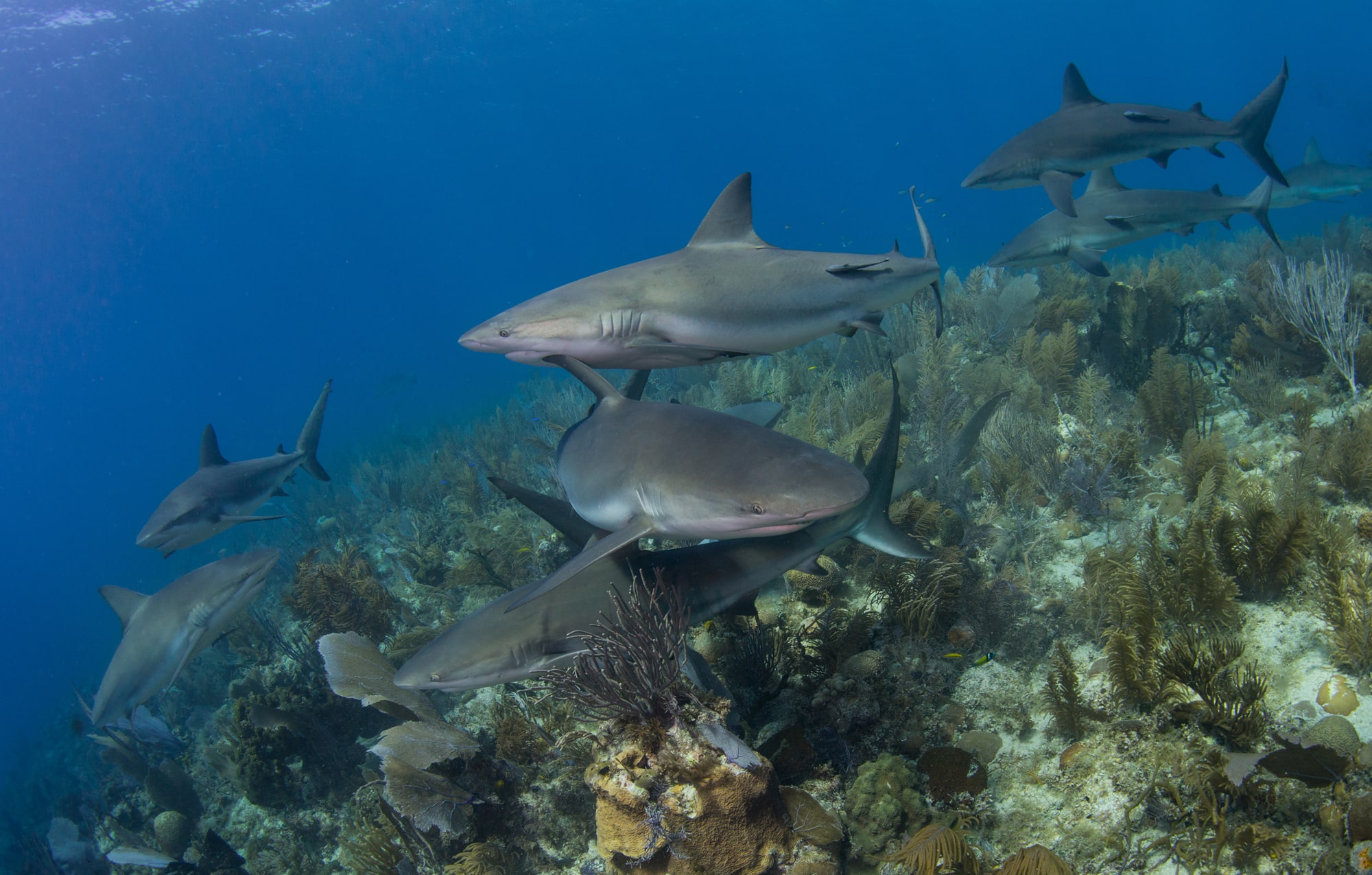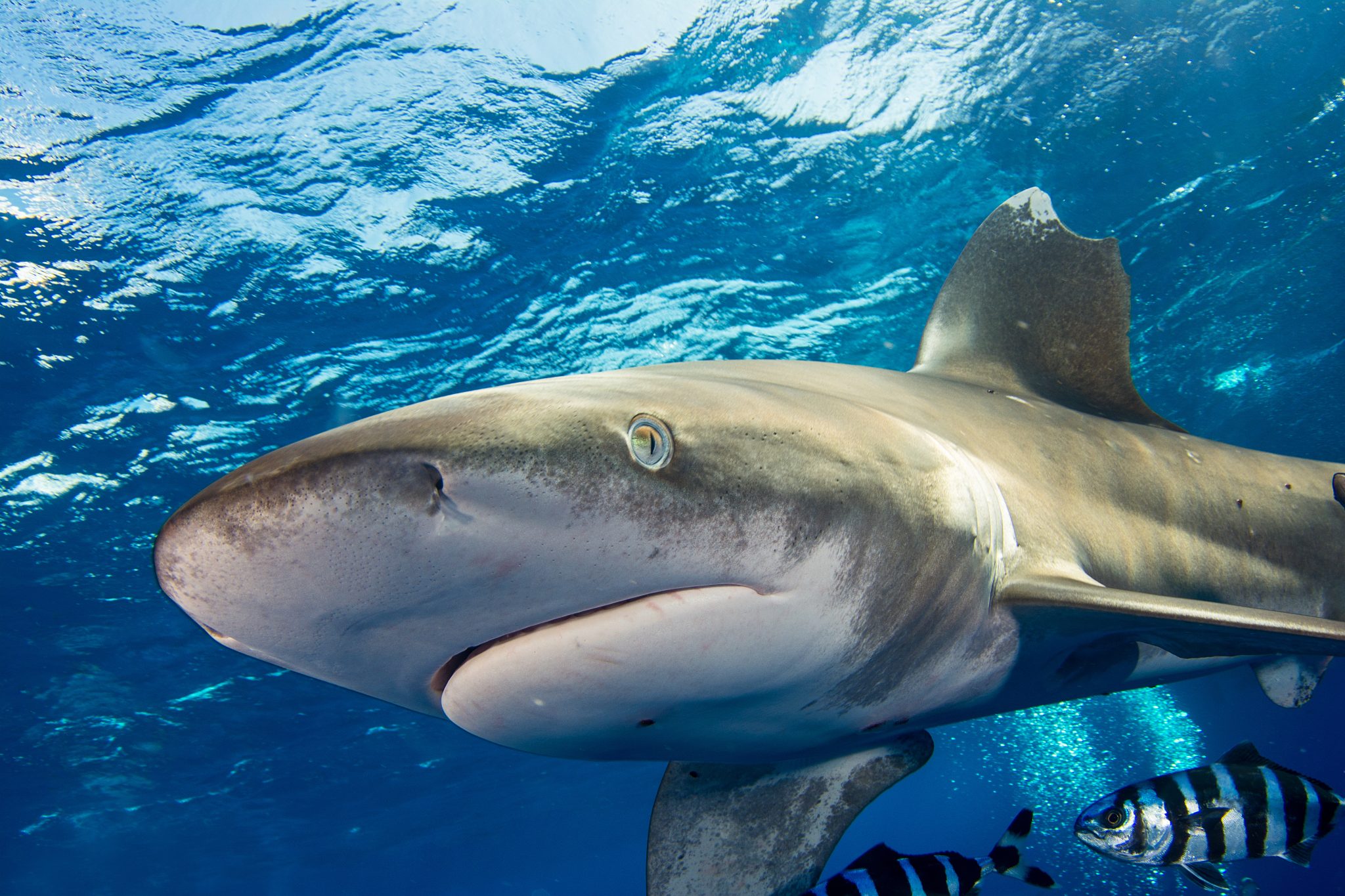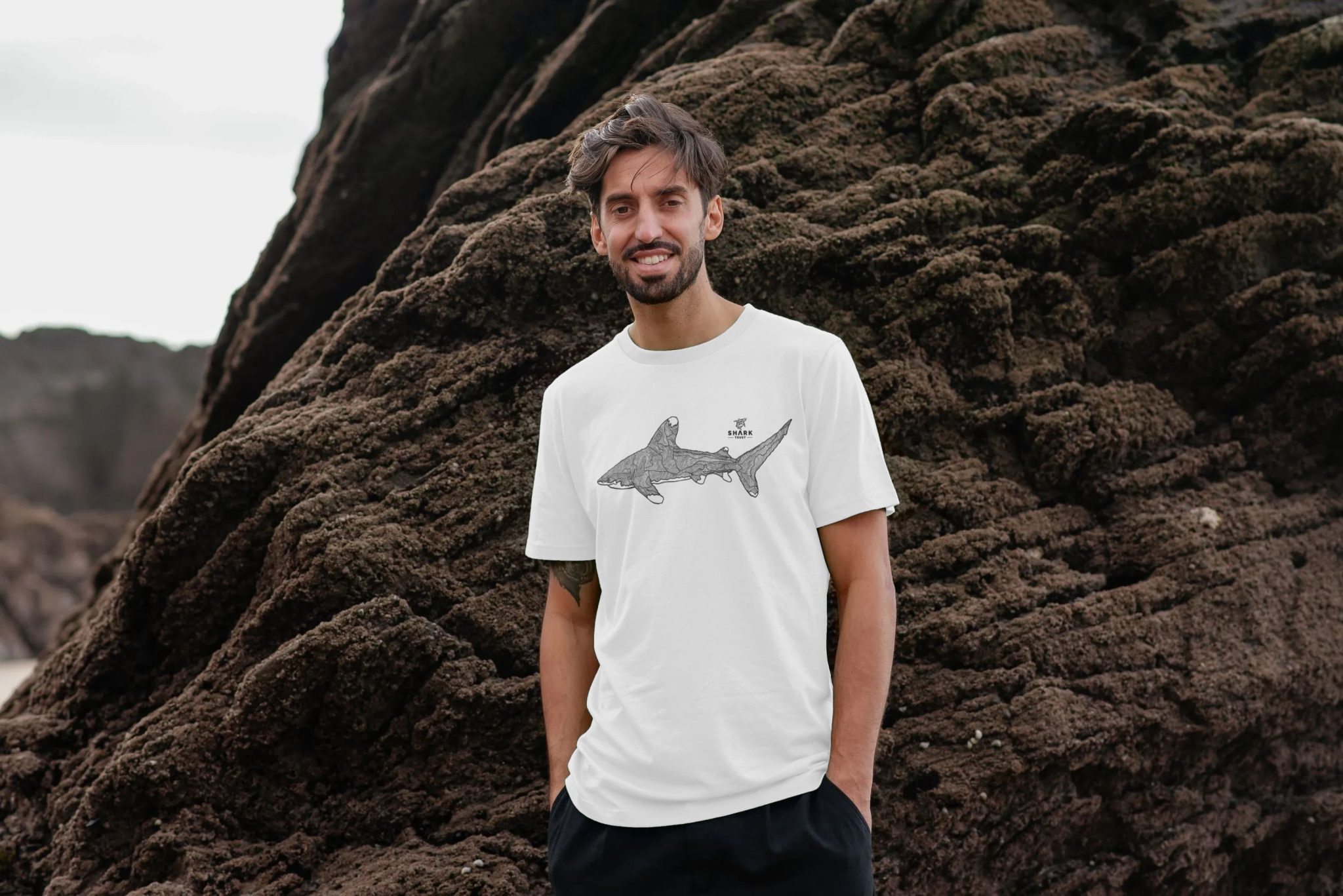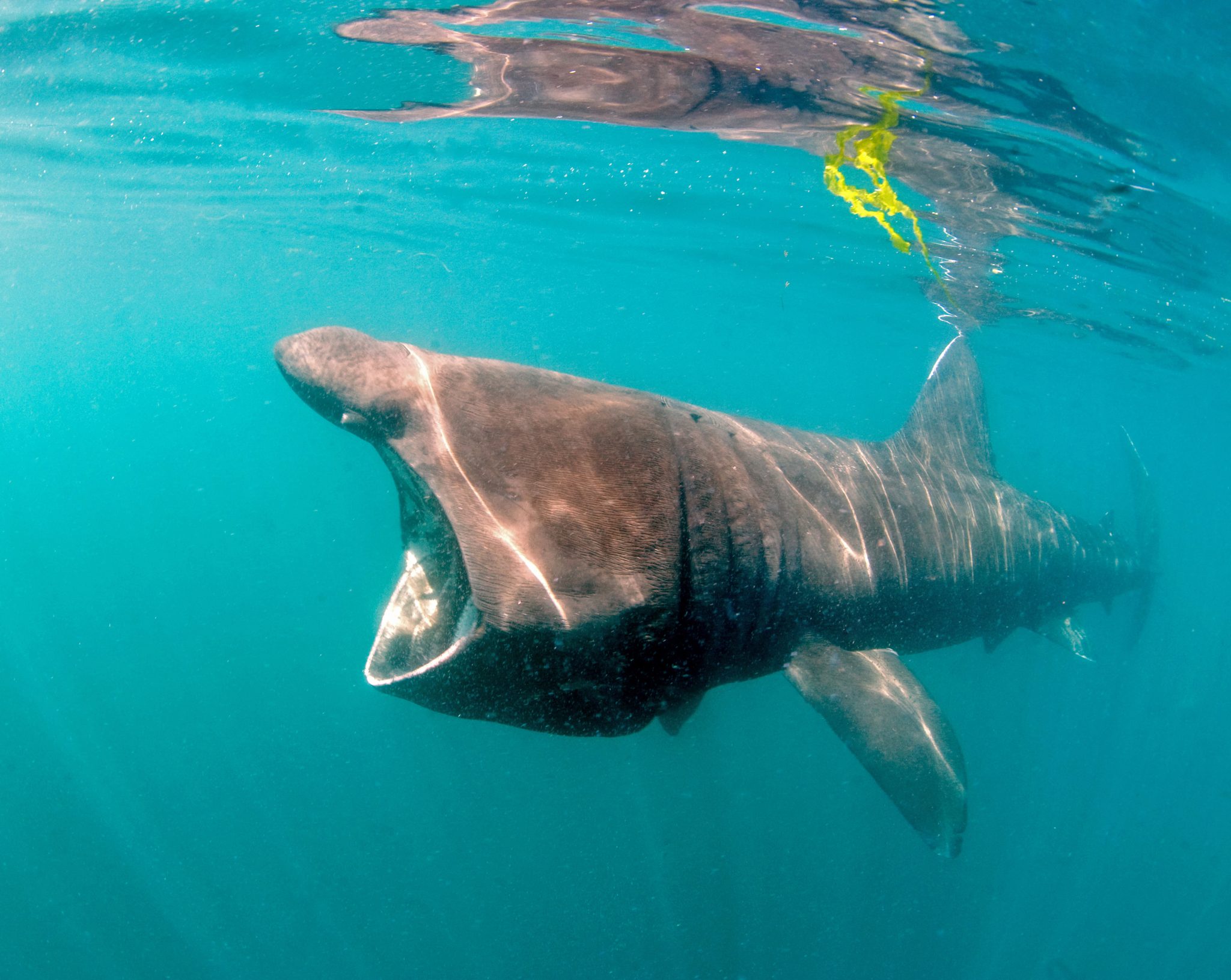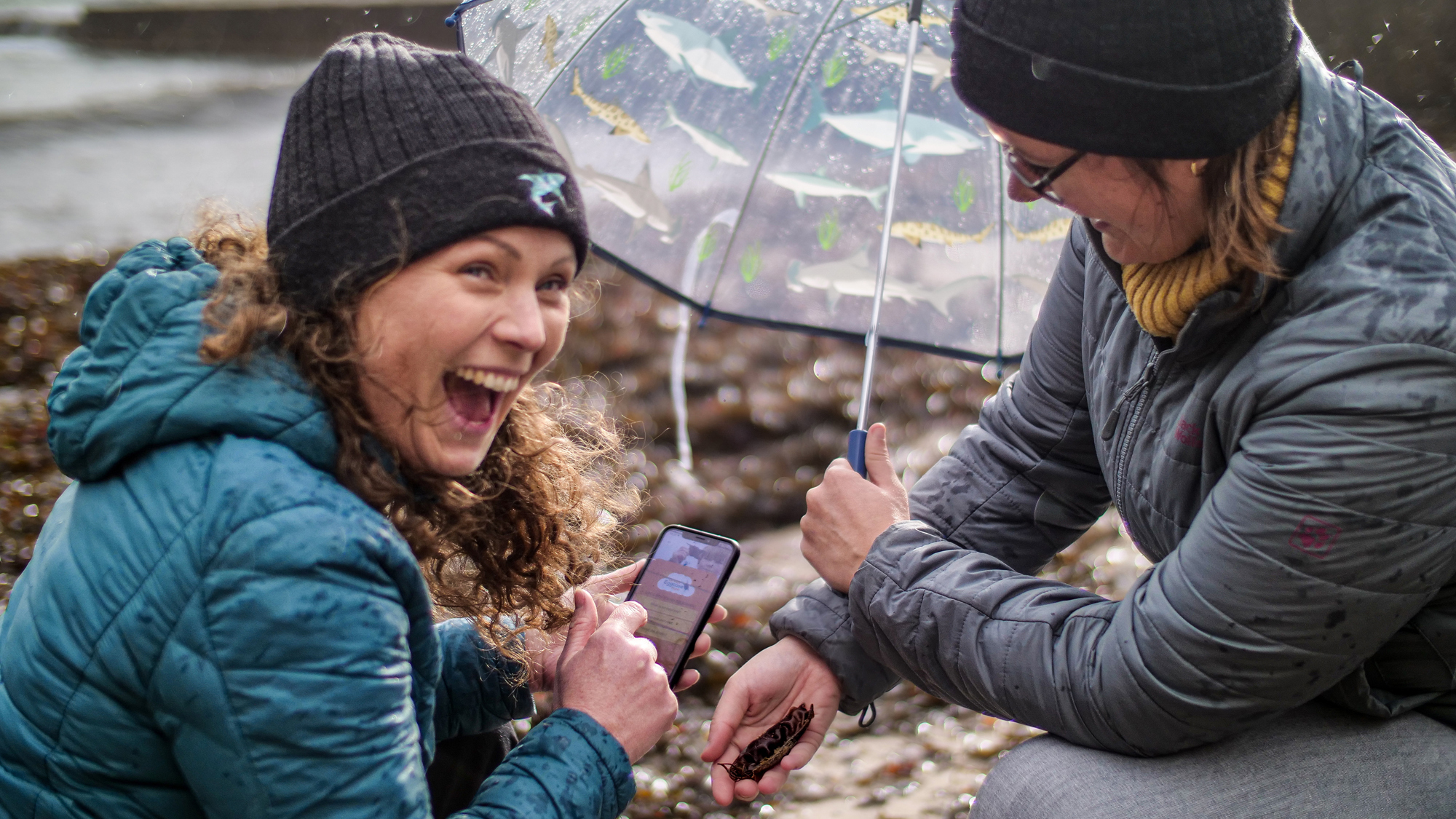Marine Life & Conservation
Nudibranchs and the fabulous Spanish Dancer (Hexabranchus sanguineus)
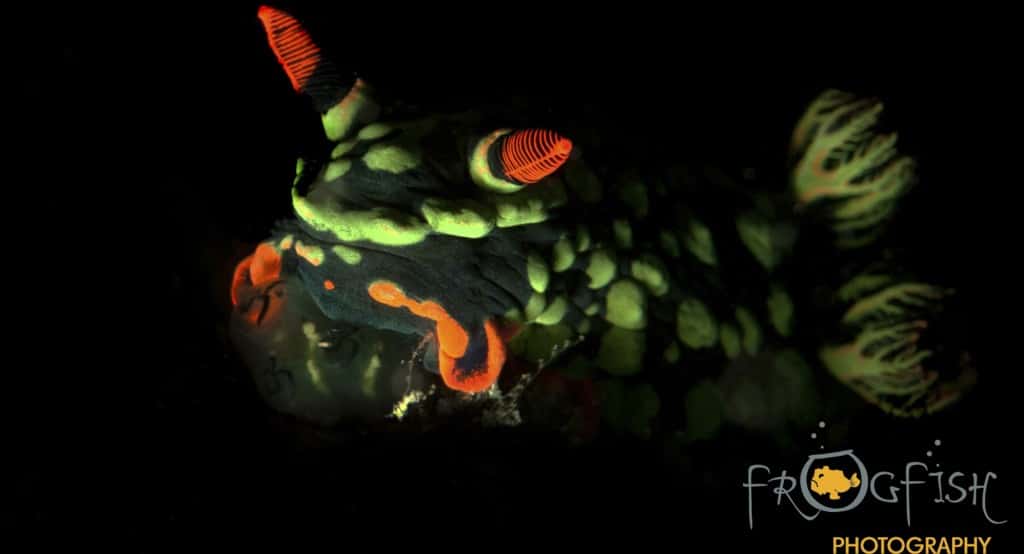
Every good Dive Master/photographer has a problem. They must look after their clients while still taking pictures. They have no time to vary the depth of focus, no time to change camera settings; their dive clients must always come first. Colin Ogden of Amoray Diving at Sodwana Bay solved the problem by shooting nudibranchs, and his study of these amazing creatures has become a passion. I spent a spellbinding evening with him learning about them.
Nudibranchs come in brilliant colours, with fabulous markings, and they can vary in size from 1mm to 600mm. They are primarily carnivores and will eat hydroids and other species of nudibranchs but most of them feed on sponges; all of which are animals. A few will eat algae or seaweed. They feed where food is available so they frequent areas where coral growth is limited; even the cold Northern European waters harbour these colourful sea slugs and nudibranch hunting has become a global passion.
Nudibranch means exposed gills. Hexabranchus, for example, has six sets of exposed gills. All but two nudibranchs are called by their Latin names. The scientific community frowns on them being given common names so the study of these creatures is not for the faint-hearted.
Most of them breath using the exposed bunches of gills on their backs, and their sensual organs are contained in a pair of rhinophores, on the front of their heads. These look like horns. All are hermaphrodite, with both male and female sex organs, which are always on the right hand side, below the neck. These can be expelled to accommodate a large meal, and then re-ingested. All of them are poisonous to fish, and a single nudibranch can kill an entire aquarium full of fish if it becomes stressed and lets off a toxin. This occasionally benefits the palatable flatworm. He sometimes mimics the shape and rhinophores of the poisonous nudibranch, escaping predators and protecting himself.
There is even a species that farms algae in its gills. It is long and thin and has many sets of gills or cerata which he uses to collect algae. You will sometimes find it spread out along the top of the reef on a sunny day, cerata exposed to catch the sun so the algae will grow faster.
The spectacular Spanish Dancer (Hexabranchus sanguineus) is one of the very few nudibranchs that goes by its common name. They grow up to 600mm long, so are clearly identifiable. “They are nocturnal animals in our waters, so we rarely spot them in Sodwana Bay. However, we found two on the point of mating on Seven Mile in broad daylight. They lined up neck to neck, and then they exchanged sperm, fertilising each other. After five or six days each lays a long egg ribbon in a continuous circle, and you can see these on the reef looking like soft rosettes.”
They are normally pink, reddish or orange. These ribbons are preyed upon by other nudibranchs of the Favourinus family and the survivors hatch into tiny nudibranchs that look nothing like their imposing parents.
Other species lay egg ribbons that hatch into tiny veligers, which are a larval stage, and they can float around in the ocean, following currents for months on end. When they sense that there is a food source, they will descend onto the reef and metamorphose into small nudibranchs. The study of these creatures is still in its infancy, although some were described as early as the 1700s, but they are fascinating creatures, and there are still many unnamed and quite rare species in our waters. Once you know what you are looking for, you can find them almost everywhere.
Words: Jill Holloway
Pictures and technical data: Colin Ogden, Amoray Diving
Copyright Ocean Spirit 2017 – www.osdiving.com
Marine Life & Conservation
Leading UK-based shark conservation charity, the Shark Trust, is delighted to announce tour operator Diverse Travel as a Corporate Patron
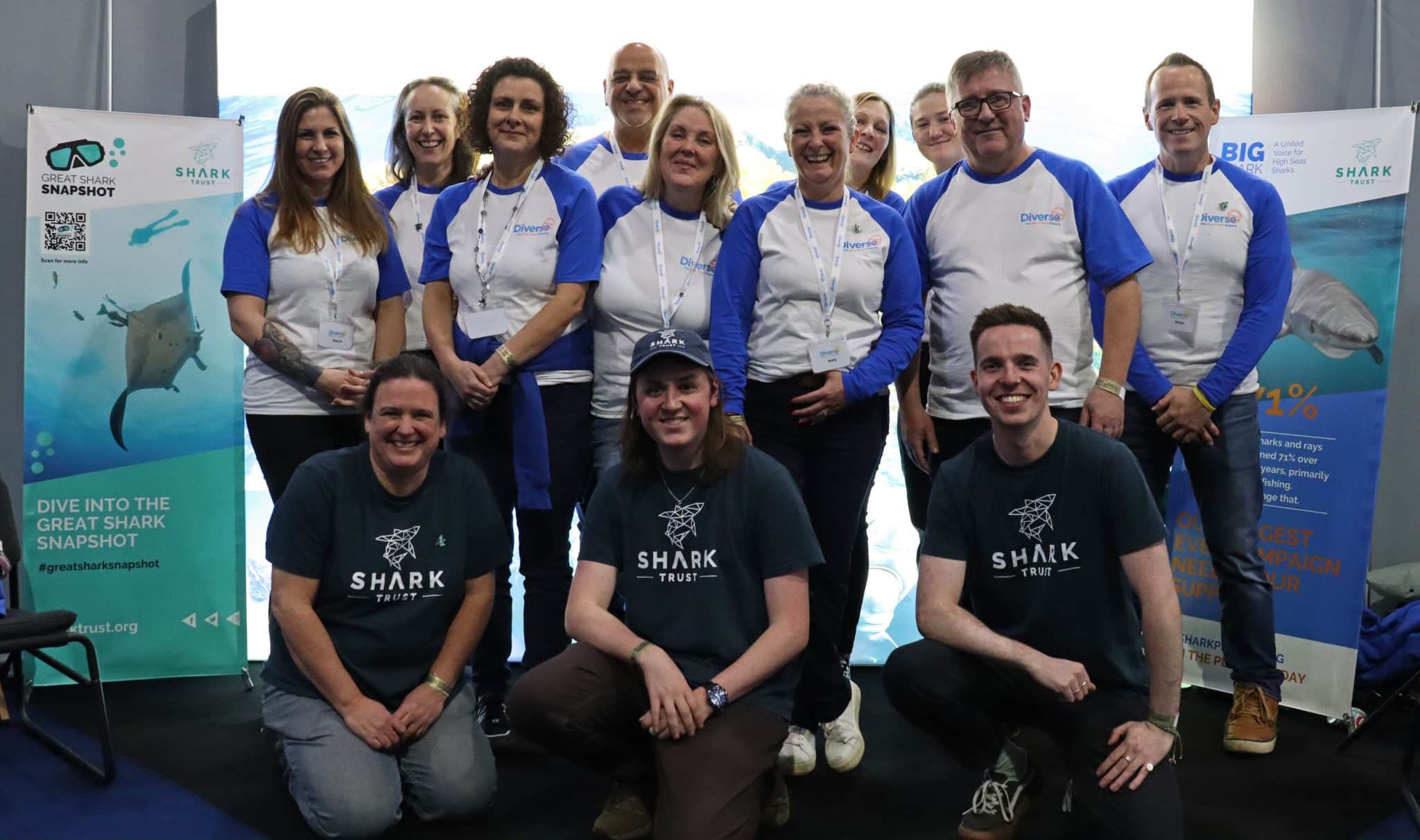
 Corporate Patrons provide a valuable boost to the work of The Shark Trust. The Trust team works globally to safeguard the future of sharks, and their close cousins, the skates and rays, engaging with a global network of scientists, policymakers, conservation professionals, businesses and supporters to further shark conservation.
Corporate Patrons provide a valuable boost to the work of The Shark Trust. The Trust team works globally to safeguard the future of sharks, and their close cousins, the skates and rays, engaging with a global network of scientists, policymakers, conservation professionals, businesses and supporters to further shark conservation.
Specialist tour operator Diverse Travel has operated since 2014 and is committed to offering its guests high quality, sustainable scuba diving holidays worldwide. Working together with the Shark Trust will enable both organisations to widen engagement and encourage divers and snorkellers to actively get involved in shark conservation.
“Sharks are truly at the heart of every diver and at Diverse Travel, we absolutely share that passion. There is nothing like seeing a shark in the wild – it’s a moment that stays with you forever!” says Holly Bredin, Sales & Marketing Manager, Diverse Travel.
“We’re delighted to celebrate our 10th year of business by becoming a Corporate Patron of the Shark Trust. This is an exciting partnership for Diverse and our guests. We will be donating on behalf of every person who books a holiday with us to contribute towards their vital shark conservation initiatives around the world. We will also be working together with the Trust to inspire divers, snorkellers and other travellers to take an active role – at home and abroad – in citizen science projects and other activities.”
Paul Cox, CEO of The Shark Trust, said:
“It’s an exciting partnership and we’re thrilled to be working with Diverse Travel to enable more divers and travellers to get involved with sharks and shark conservation. Sharks face considerable conservation challenges but, through collaboration and collective action, we can secure a brighter future for sharks and their ocean home. This new partnership takes us one more valuable step towards that goal.”
For more information about the Shark Trust visit their website here.
For more about Diverse Travel click here.
Marine Life & Conservation
Shark Trust Asks Divers to help with Shark Sightings this Global Citizen Science Month
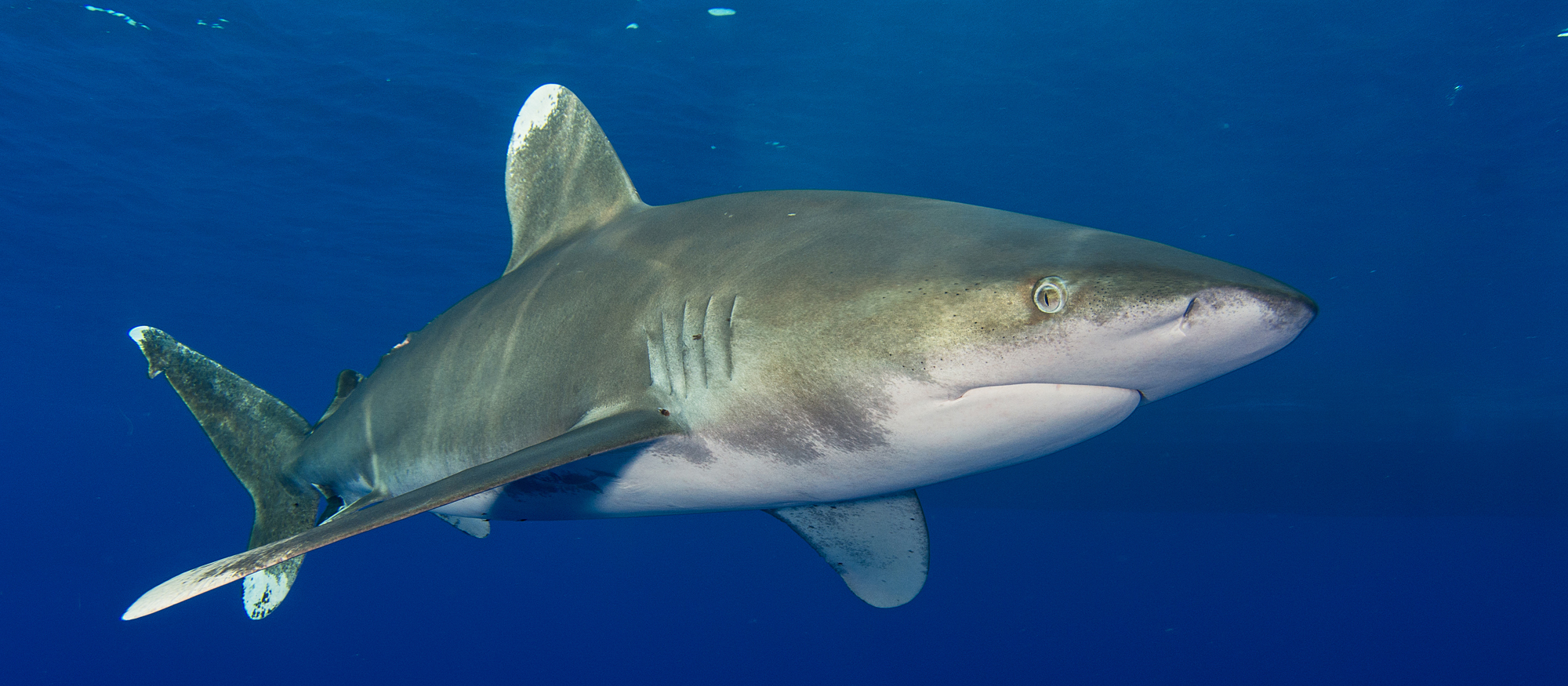
 Whether you are stuck for ideas of what to do with the kids or are off on the dive trip of your dreams. You can get involved in Citizen Science Month and help the Shark Trust by providing vital data about sharks are rays both close to home and further afield.
Whether you are stuck for ideas of what to do with the kids or are off on the dive trip of your dreams. You can get involved in Citizen Science Month and help the Shark Trust by providing vital data about sharks are rays both close to home and further afield.
In addition to reporting the sharks and rays you see on your dives, the eggcases you find on the beach, the Shark Trust is looking for some specific data from divers who are asked to report any Oceanic Whitetip and Basking Sharks.
Oceanic Whitetip Sharks
The Shark Trust are looking specifically for Oceanic Whitetip Shark sightings over the coming weeks and months. So, if you are diving anywhere in the world, please report your sightings via the website or app.
Website: https://recording.sharktrust.org/
App: Search The Shark Trust in your app store
The Oceanic Whitetip. Known for their incredibly long dorsal and pectoral fins, this species was once the most abundant oceanic-pelagic species of shark on the planet.
Large and stocky, they are grey or brown above, and white below and famous for their huge rounded first dorsal fin and paddle-like pectoral fins. The fins also highly prized within the shark fin trade. Whilst they are mostly solitary, Oceanic Whitetips do occasionally hunt in groups.
An inquisitive species, they were easy prey for fisheries. Combined with their low reproductive rate, they were inevitably at high risk of population depletion. And declines of up to 99% have been reported in certain sea areas. They are listed as Critically Endangered on the IUCN Redlist (2019).
Conservation efforts to discourage further declines include listing on CITES Appendix II and CMS Appendix I. They’re also the only species prohibited from take by all the Tuna RFMOs (Regional Fisheries Management Organisations). However, these measures do not mean that Oceanic Whitetips are not still caught – whether targeted or as bycatch – in some parts of the world. With populations declining at such a high rate, effective implementation of management measures is essential to ensure that the species can recover.
If you are lucky enough to get an image of an Oceanic Whitetip and you record your sighting on the Shark Trust app or website YOU CAN WIN! All images submitted with sightings, that also give consent to use in conservation messaging, will be in with a chance to win an Oceanic Whitetip T-shirt and mug. The competition will run until the end of “Shark Month” in July – so keep those sightings (and images) coming in.
Basking Sharks
Basking Shark (Cetorhinus maximus) season is upon us, and the Shark Trust is asking everyone to keep an eye out for these majestic giants over the summer months. If you see any, you can record your sighting to the Basking Shark Sightings database.
Each year, these mighty fish return to British waters to feed on plankton. You may see one, (or a few if you’re really lucky) from around April-October. They can be seen feeding at the surface of the water, where they look like they’re basking in the sun. Thus, their name!
Sighting hotspots around the British Isles include southwest England, Isle of Man, north coast of Ireland, and western Scotland. The Sea of the Hebrides is the most prolific sightings area in Scotland, but they have been spotted all around the coast and have even ventured into some of the sea lochs. The Shark Trust has received thousands of sightings since the Basking Shark project began, but more data is needed to truly understand what is going on with population numbers and distribution. You can help by recording your sightings this summer.
Great Eggcase Hunt
The Shark Trust has an Easter Egg Hunt with a difference for you to try. Take part in the Great Eggcase Hunt and get involved with a big citizen science project that helps shark, ray and skate conservation. And it’s an enjoyable activity for all the family.
The Shark Trust also want snorkellers and divers to record their underwater eggcase findings. Underwater records help pinpoint exactly where sharks and skates are laying their eggs and can help link to beach records. Learning the depth and substrate that they lay on also helps better understand the species.
Find out more: https://www.sharktrust.org/great-eggcase-hunt
Whether you are diving, snorkelling or exploring on the beach you can take part in Citizen Science Month and get actively involved in shark and ray conservation. Find out more: www.sharktrust.org
-

 News3 months ago
News3 months agoHone your underwater photography skills with Alphamarine Photography at Red Sea Diving Safari in March
-

 News2 months ago
News2 months agoCapturing Critters in Lembeh Underwater Photography Workshop 2024: Event Roundup
-

 Marine Life & Conservation Blogs2 months ago
Marine Life & Conservation Blogs2 months agoCreature Feature: Swell Sharks
-

 Blogs1 month ago
Blogs1 month agoMurex Resorts: Passport to Paradise!
-

 Gear News3 months ago
Gear News3 months agoBare X-Mission Drysuit: Ideal for Both Technical and Recreational Divers
-

 Blogs2 months ago
Blogs2 months agoDiver Discovering Whale Skeletons Beneath Ice Judged World’s Best Underwater Photograph
-

 Gear Reviews2 months ago
Gear Reviews2 months agoGear Review: Oceanic+ Dive Housing for iPhone
-
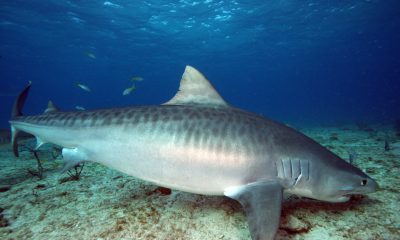
 Blogs3 months ago
Blogs3 months agoThe Thrilling Encounter with Tiger Sharks at Beqa Lagoon’s ‘The Colosseum’ with Coral Coast Divers


